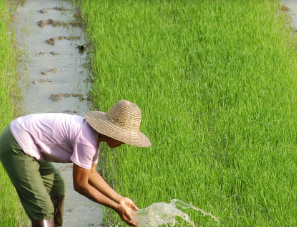The BRICS group of Brazil, Russia, India, China and South Africa has invited Saudi Arabia, Iran, Ethiopia, Egypt, Argentina and the United Arab Emirates to join, as it looks to counterbalance the G7 and Western-led organizations, the Financial Times says.”This membership expansion is historic,” said Chinese President Xi Jinping. “It shows the determination of BRICS countries for unity and cooperation with the broader developing countries The new BRICS members will join on 1 January 2024, and more additions could follow, according to South African President Cyril Ramaphosa. Indonesia has reportedly declined the possibility of joining, but says it is discussing the option internally.The BRICS group makes up 18% of global exports and this share is rising, with growth in intra-BRICS exports outstripping the global average, according to a United Nations report. The bloc’s share of global foreign direct investment (FDI) inflows doubled to 22% between 2001 and 2021
The group has called for reforms of the UN Security Council, International Monetary Fund and World Bank, and UN Secretary-General António Guterres said following the BRICS expansion deal that he supports these suggestions. “Today’s global governance structures reflect yesterday’s world,” he said. “For multilateral institutions to remain truly universal, they must reform to reflect today’s power and economic realitieshe African Union’s introduction into the G20 is likely to influence trade flows from the continent. Africa has the world’s largest free trade area, the African Continental Free Trade Area (AfCFTA), and is home to more than 30% of the critical minerals needed in energy transition technologies, AP reports. Meanwhile, the G20’s members account for three-quarters of world trade and roughly 85% of global GDP
Prices are up by around a fifth in leading exporting countries such as Thailand and Vietnam. Traders expect other exporters to put in place similar restrictions because of concerns over domestic food security, while the FAO says there are “concerns that export restrictions would be extended to other rice types India provides over 40% of global rice exports, shipping more than 22 million tonnes in 2022, and the new restrictions threaten already vulnerable world rice markets, according to the International Food Policy Research Institute. More than 40 countries in Asia and Africa get over half of their rice imports from India, it notes.

A new trade transport corridor was also floated at this month’s G20 talks in India, with backing from the US, the EU and Saudi Arabia. The ship and rail route linking India to the Middle East and the Mediterranean would counter China’s Belt and Road Initiative.UNCTAD. This is partly thanks to the African Continental Free Trade Area, which launched in 2021 and will eventually create the world’s biggest free trade area, covering economies that are home to 1.7 billion peopleThe ways trade can contribute to a greener and more sustainable future was the focus of the World Trade Organization’s Public Forum on 12-15 September. Here’s a round-up of some of the green trade milestones of this year that underpinned the discussions during the week. Other highlights included the launch of a flagship report calling for an inclusive re-globalization and the announcement of a new initiative by the Kingdom of Saudi Arabia and the World Economic Forum to grow services trade.
Emerging and new technologies are changing global trade. “TradeTech” is expected to have the biggest impact in four areas – supply chain management, trade compliance, information exchange and digitalization, and trade finance and liquidity.Global goods trade rose in the second quarter following two quarters of decline, according to the World Trade Organization’s (WTO) Goods Trade Barometer. Strong vehicle sales pushed the barometer up to 99.1, from 95.6 in May. But it is still short of its 100 baseline, indicating that goods trade is slightly below trend.
Changing weather patterns are already impacting port operations. A severe drought in Panama is leading to 50% rises in waiting times for ships entering the Panama Canal, creating large backlogs of vessels. The Panama Canal Authority expects to restrict transit and ship size for at least another 10 months to try and preserve water until the rainy season. Read an in-depth review of the issues at the Panama Canal by our Digital Editor, Spencer Feingold.Global goods trade rose in the second quarter following two quarters of decline, according to the World Trade Organization’s (WTO) Goods Trade Barometer. Strong vehicle sales pushed the barometer up to 99.1, from 95.6 in May. But it is still short of its 100 baseline, indicating that goods trade is slightly below trend.
